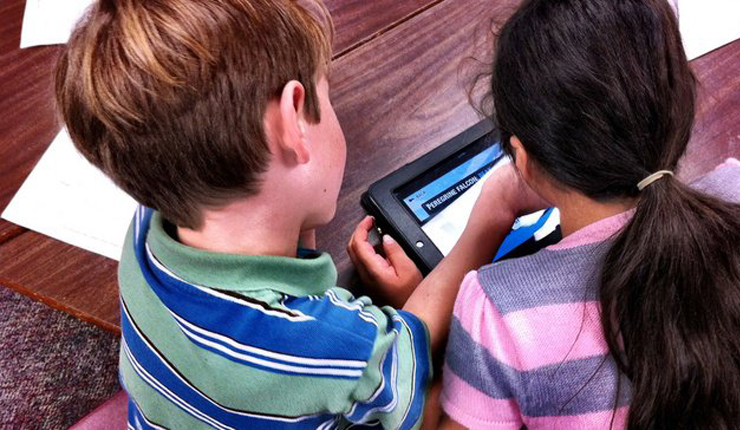
Personalized learning has become one of the most talked-about strategies in education today. Public, private and charter schools across the country are experimenting with new approaches to personalized learning and figuring out how best to tailor instruction to the needs and desires of individual students.
Technology has made personalized learning both more approachable and more challenging, forcing schools to draw a clear line about where to separate good pedagogy from tools that facilitate it.
Using insights from prior reporting and interviews with practitioners and researchers in the field, we have compiled a list of top trends in the personalized learning space. In no particular order of importance, you’ll find this list below.
As a bonus, we also included three things that are on the horizon in personalized learning. Educators and ed tech providers alike should have these things on their radar as they are sure to take a more central role in personalized learning in the years to come.
1. Personalized learning platforms
These learning management systems aim to unify online curriculum and content with instructional and administrative work. They are designed to make personalizing instruction simple for teachers. There are a number of PLPs on the market and some school systems have done the work of building their own to better meet local needs.
California-based charter school network Summit Public Schools has made its personalized learning platform (developed in partnership with Facebook) available for free to schools that join Summit Basecamp. They must also go through an intensive week of training on the platform and the Summit approach to personalized learning. More than 130 schools now participate in the fast-growing Basecamp community.
ALSO READ: 4 Critical Personalized learning Questions, Answered
2. Alternative classroom design
As teachers develop personalized learning activities for students, it has become very clear that the traditional classroom, with its neat rows of desks and chairs and a teacher at the front, doesn’t work anymore. Schools are redesigning classrooms to have different kinds of seats so students can choose whether to be sitting, standing, balancing on balls, lounging or even sprawled out on the floor as they work.
Schools are also finding ways to let more natural light into classrooms and teachers are organizing their rooms into stations so students can cycle through areas for small-group instruction, solo online work and one-on-one time with teachers. All of this contributes to respecting students as individuals and supporting them as they move at their own pace.
3. Redefining the teacher role
Traditional instruction has been marked by a teacher lecturing students who passively receive the content. In the personalized learning world, schools are turning that teacher role on its head, transitioning educators from being the providers of all knowledge to the facilitators of learning.
This is a more complicated role for teachers, who have to learn new classroom management strategies and relinquish control of instruction. It also takes more work from students, who have to be engaged participants in every lesson. In many schools, the transition to personalized learning is a complicated one for all involved.
4. Competency-based education
With personalized learning comes a focus on helping each student progress through a given curriculum at his or her own pace. At its best, personalized learning can shift the measure of academic progress from time spent in a classroom to competencies mastered.
New Hampshire schools have been particularly free to explore this potential because high schools are no longer bound to the Carnegie unit in assigning credit. Whether a student masters material in 120 instructional periods or half as many, he or she can get credit for that progress, based on state regulations. Still, more than 10 years after the policy change, many schools remain committed to time-based systems, reflecting the challenge inherent in implementing such a change.
5. Project-based learning
Teachers have found project-based learning to be an important element of personalized learning approaches. With well-designed projects, students can get the freedom to explore topics they find most interesting. Personalized learning is not simply progress at a student’s individual pace, but also content tailored to a student’s personal interests.
Schools have seen even the most detached students become engaged through compelling projects, watching disciplinary infractions plummet and academic outcomes soar. Parents find their children like school for the first time. And students get the chance to follow their own curiosities to new academic heights.
6. Universal Design for Learning
The principles of Universal Design for Learning date back to the 1990s, but they have a new relevance in personalized learning frameworks. Diversity in U.S. classrooms is only increasing, and teachers often struggle to meet the needs of all learners. By integrating UDL principles into curriculum planning from the beginning, teachers can challenge and engage all students.
Just like ramps help make building entrances accessible for people in wheelchairs, parents pushing strollers, and others, UDL can make curriculum accessible for students with different learning styles, needs and preferences. The benefits of this approach are important even beyond inclusion for students with diagnosed learning disabilities. UDL benefits everyone in a classroom.
7. Personalized learning plans
Some schools formalize personalized learning by creating individual plans for every student. These plans are created collaboratively by students, parents and teachers as well as other support personnel, and they are updated throughout the year as living documents that grow and change as students do.
Personalized learning plans outline student goals spanning personal, academic and career realms. They help structure academic content so student learning can be directly tied to achieving those goals. Often, schools develop these plans through student-led conferences, putting students as young as elementary school in the driver’s seat of their own educations.
What’s on the horizon?
Personalized learning has seen a renaissance because of new educational technologies that make it easier for teachers to assess student progress on a day-to-day basis and differentiate instruction based on that data. Still, the space is changing all the time.
- One way personalized learning could become more effective is through data-sharing. Analytics-based assessments of what online modules are most effective for what types of students can help teachers and schools structure their own curricula to use the best materials. Open educational resources and marketplaces for teacher-created content are blossoming — but without data-based assessments of what works, progress will be tempered.
- School and district administrators continue to complain that the technology systems available to support personalized learning are limited. There are strong learning management systems that can’t be integrated with student information systems and parent communication systems or online learning systems. In the years to come, ed tech companies will work to improve this interoperability or create all-in-one systems.
- At the higher-education level, competency-based education has already led to a raft of alternative credentialing options that let students display their academic progress down to individual skill attainment. At the K-12 level, this type of system could help motivate students as they work toward their own diplomas and give them ready-made examples of accomplishments to highlight on college transcripts.


